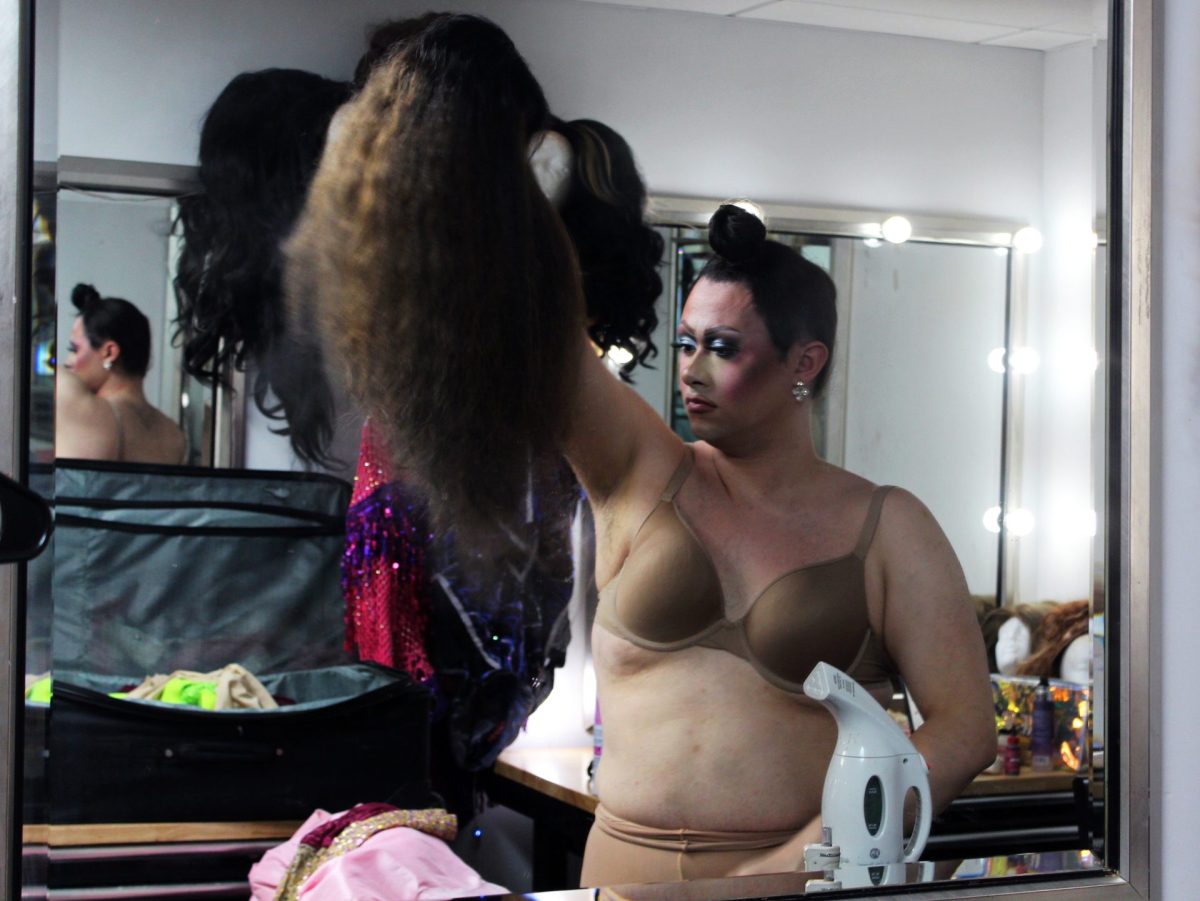After 13 years of being tucked away in the university’s library, DePaul’s Art Museum has a new home and a new vision.
Located next door to the CTA’s Fullerton Red Line stop, the museum looks to attract more visitors to the museum’s move from the library to its very own 15,000 sq. foot building.
Museum Director, Louise Lincoln, predicts the new space will provide more opportunity to expose students and faculty to art on campus. The $7.8 million construction of the museum was completely funded by the university, but a grant of $50,000 was given from the Terra Foundation for the opening exhibit, Re:Chicago.
The exhibit will highlight Chicago from the viewpoint of Chicago artists. The museum asked 41 members of Chicago’s art community to offer up a name of a famous Chicago artist or “should be” famous Chicago artist to be displayed for the opening exhibition. The idea is to emphasize the importance of Chicago to the people who call this city home.
DePaul is certainly not alone when it comes to university museums in Chicago. Attracting new visitors was a top priority when Loyola University moved their museum from the Lake Shore campus to their campus west of the Water Tower in 2005.
|
Opening Details DePaul’s Art Museum is relocating from the university’s library to a new building at 935 W. Fullerton. It opens to the public Sept. 17 featuring the exhibit, Re:Chicago. It will remain open all week free of charge to the public. Saturday Sept. 17
Sunday Sept. 22
The opening exhibit features 41 Chicago based artists and their impressions of Chicago through works of art. Re:Chicago will last throughout the first academic quarter. The museum plans to install a new exhibit every quarter thereafter. The museum will feature four to five galleries, including a large collection of classical African sculptors and large installments that can be seen on the entry level of the museum. Guests are invited to blog about their experience on DePaul’s Art Museum website. Regular Museum Hours
Museum is free of charge to the public. |
“With the move of the museum to the downtown campus we’ve had ten times as many visitors than we did at the Lake Shore campus,” said Ann Meehan, curator of education for the Loyola University Museum of Art.
LUMA recorded 18,000 visitors in 2010 whereas at their former site their numbers were only being measured in the hundreds.
The differences between the two museums are significant both in art selection and in location. When LUMA first moved downtown their opening exhibit, Caravaggio: Una Mostra Impossibile, focused on religious themes, as do almost all of their exhibits.
While DePaul recognizes its significance in the Catholic world as well, the new museum will not limit itself to religious exhibits. They are using the museum to let students explore not just what DePaul’s religious foundation is based upon, but the uniqueness of DePaul’s home in Chicago.
Lincoln expresses high hopes for the new space. She wants first and foremost to continue to make it a teaching museum. With plenty of extra space she also wants to make it a focal point for DePaul’s Lincoln Park Campus and draw more visitors.
Another main concern at the new location she said is to protect the art from the noise and vibrations of the neighboring CTA station.
Lincoln has been DePaul’s Art Museum director since its creation 13 years ago. She was asked to oversee relocation to the new building by DePaul President, Rev. Dennis H. Holtschneider. Lincoln explained that Fr. Holtschneider realized the space would be perfect for the museum.
The property is owned by DePaul, but was used for commuter access to the CTA Fullerton stop during the station’s reconstruction. Lincoln was enthusiastic about having more space and more of a presence on campus, but the location of the building within such close proximity to the CTA station worried her.
“I told them I would love to do it, if we could control vibration,” Lincoln said about the train passing by the building and affecting the art.
Lincoln explained that vibration and noise are harmful to art and can potentially ruin a piece by creating movement that can pull the paint away from the canvas as well as making a minor crevice dramatically deeper.
Lincoln discussed her concerns with architect’s at Antunovich Associates and they responded by footing the building on deep caissons that all but eliminate any trembling as the El rumbles by overhead.
The building is almost completely soundproof. Only a light muffled noise pierces its walls during the passing of a CTA train, not at all disturbing a guest’s silent contemplation of the art within.
Architect Joe Antunovich explained that everything that went into the building of the museum had the preservation of the art in mind.
“We started by drilling caissons into the ground, creating a sturdy foundation,” he said. “The building itself is made of reinforced concrete and the outer brick you see on the building is backed by 12-inch concrete blocks. The windows are also triple glazed to ensure a soundproof environment.”
Lincoln said she doesn’t want the students to get lost in the excitement surrounding the Sept. 17 opening. She wants the museum to be a place where students can observe, learn, and appreciate art. Her primary audience has always been the students.
In order to stoke interest and make the museum an exciting “renewed” addition to the campus, Lincoln is holding receptions throughout the week (see sidebar) and inviting all students to attend. Her “vision” going forward includes, gallery conversations between featured artists, performance art, videos focusing on Chicago, and academic sessions whereby faculty members bring their classes to the museum for a walk-through specific to their educational lesson.
“History teachers can come in and explain the significance of art in history. English faculty members can discuss the importance of art in their field of study. So can many other departments at DePaul,” she said.
It helps that Lincoln is supported by Paul Jaskot, former President of the College Art Association and DePaul Professor of the History of Art and Architecture. Jaskot was President of the CAA in 2010 when he helped construct the Strategic Plan 2010-2015 for members of the Association.
His experience and insight squares well with Lincoln’s own outlook on what she wants viewers to take away from the art.
Jaskot has seen problems with other university museums and thinks his past experience will help DePaul’s excel where other schools have failed.
“As president (of CAA), I was witness to numerous examples of the crisis in funding of the arts and humanities as well as changes in museum policies. One of the most dramatic periods began when, after the initial recession hit, university museums began to consider selling off their collections to pay for operational and other expenses,” Jaskot said.
In 2009, Brandeis University near Boston proposed the idea of selling off their art collection from their museum in response to a budget crisis at the university. The idea did not sit well with many students, alumni and members of the art community, including the CAA.
After two-years of litiagation, brought by three board members of the school’s Rose Art Museum, the school settled and agreed to keep it open and not sell any artwork.
DePaul’s Art Museum is composed mainly donated pieces and as of the opening will have only one purchased piece in its collection. Lincoln said the donated values range anywhere from three to nine figures. Most donations are local gifts from artists and collectors who are impressed or inspired by the museum.
“We consider art and material culture as educational assets, not as financial ones. Such an approach goes along with our interest in having the museum accredited at the highest professional level,” Jaskot said of DePaul’s mission for the museum.
The museum will continue to change out its exhibits every quarter offering students different variations of artwork to explore and study. Lincoln said moving from a small two-gallery space inside the library to a top of line million-dollar building has been a challenge, but she’s looking forward to the students taking full advantage of the move for many years to come.







